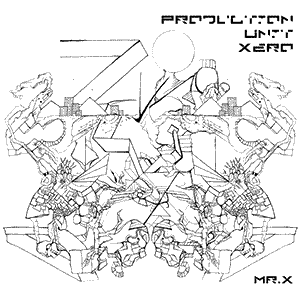Esperanto – Ryuichi Sakamoto (1985) – Review

In the realm where electronic synthesis intertwines with the raw aesthetics of world music, Ryuichi Sakamoto’s “Esperanto” resides as a testament to the harmonious coexistence of diversity in sound. Sakamoto’s craftsmanship in this album manifests as a curated garden where digital sounds bloom beside organic instrumentals, where the technological meets the traditional in a fluid dance of melodies and rhythms.
“Esperanto” seems to carry the listener on a journey through a synthesized atlas, where each track embodies different geographies and cultures. Sakamoto’s discerning use of various instruments and vocal samples conjure imagery, atmospheres, and moods that feel globally connected yet locally revered. The tracks ebb and flow with a sense of intention that reflects a careful study and appreciation of different musical influences and backgrounds. This intention breathes life into the compositions, allowing them to stand as sonic portraits capturing the essence of various musical languages.
Each piece within “Esperanto” carries its narrative, contributing to the album’s overall storytelling. The compositions don’t necessarily abide by the conventional structures of Western music, which allows for a broader auditory exploration. These compositions shimmer with intricate textures, with elements that surprise and captivate. It feels like Sakamoto’s electronic arrangements act as a bridge, linking different musical worlds, allowing them to converse and interact in a shared space.
Sakamoto’s touch as a composer is ever-present, and his ability to conjure emotion through the interplay of synthetic and acoustic sounds is nothing short of remarkable. His understanding of melody and harmony imparts a sort of universal language that speaks to the interconnectedness of musical cultures. There’s an evident precision and care in the execution of each arrangement, ensuring that the electronic enhancements serve to complement and elevate the natural sounds rather than overshadowing them.
Listening to “Esperanto” is akin to an immersive exploration. It feels contemplative, like each track provides a space to pause and reflect, to be embraced by the nuanced interweaving of sounds. Ryuichi Sakamoto, through this offering, doesn’t just present music; he presents a worldview, an auditory landscape that invites listeners to wander and wonder at the multitude of musical expressions that it embodies.
While “Esperanto” aligns with the ethos of electronic music, it also extends an invitation to appreciate the rich tapestry of world music influences that it incorporates. It stands as an album that celebrates diversity in sound, honoring the unique qualities of various musical traditions while also exploring the innovative realms of electronic synthesis. This delicate balance presents an album that feels both timeless and forward-thinking, a space where musical languages resonate in a universal echo of creativity and expression. Sakamoto’s “Esperanto” thus emerges as a vibrant ode to the global symphony of sounds, a harmonious confluence where the musical spirits of the world are invited to converse and collaborate.




